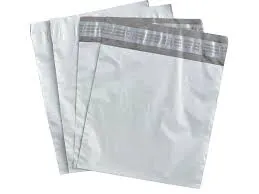garbage liners
Understanding Garbage Liners The Unsung Heroes of Waste Management
In our daily lives, waste management is an essential aspect that often goes unnoticed until it becomes a problem. One of the critical components of effective waste disposal is the use of garbage liners. These seemingly simple products play a significant role in keeping our environments clean, organized, and hygienic. This article delves deep into the importance, types, and benefits of garbage liners, shedding light on their often overlooked value in waste management.
What are Garbage Liners?
Garbage liners, commonly known as trash bags or bin liners, are made from materials such as plastic, biodegradable substances, or fabric. They are designed to line waste containers, collecting waste and preventing it from contaminating the bin itself. Their primary function is to keep trash contained, making it easier to handle and remove waste without making a mess.
Types of Garbage Liners
Garbage liners come in various types, each designed to cater to different waste management needs
. Here are some common categories1. Plastic Liners These are the most common type and are available in various thicknesses. They are durable and waterproof, making them suitable for wet and dry waste.
2. Biodegradable Liners As environmental concerns grow, biodegradable liners have become increasingly popular. Made from materials that decompose over time, these liners offer an eco-friendly alternative to traditional plastic bags.
3. Heavy-Duty Liners Designed for particularly heavy or sharp waste, heavy-duty liners are thicker and more resistant to tears and punctures. They are ideal for construction sites, industrial settings, or even households that generate significant amounts of waste.
4. Custom-Sized Liners For specific waste bins or containers, custom-sized liners ensure a snug fit, preventing leaks and spills.
garbage liners

Benefits of Using Garbage Liners
The use of garbage liners presents numerous advantages that extend beyond mere convenience
1. Hygiene Garbage liners help maintain cleanliness by preventing direct contact between waste and the bin. This reduces unpleasant odors and keeps pests at bay.
2. Ease of Disposal Bagging waste in liners allows for quick and easy removal. When it’s time to dispose of the waste, simply lift the liner out of the bin, tie it up, and throw it away. This process simplifies waste management significantly.
3. Protection of Waste Containers Liners protect the interior of bins from stains and residue. This protection prolongs the life of the container, ultimately saving money on replacements.
4. Environmental Considerations With the rise of biodegradable options, consumers can choose liners that align with their environmental values, contributing positively to the global effort of reducing plastic waste.
5. Organizational Aid In kitchens or during events, garbage liners help segregate waste, making recycling and composting easier and more efficient.
Conclusion
Garbage liners may seem like a minor element of waste management, but their impact is substantial. By promoting hygiene, convenience, and environmental responsibility, they play a vital role in our daily lives. Choosing the right type of garbage liner can enhance waste management efforts in both residential and commercial settings. As we continue to grapple with waste management challenges globally, recognizing the importance of such unsung heroes as garbage liners is essential for a cleaner, more sustainable future.
-
The Best Uses for Small Trash Bags in Daily LifeNewsJul.01,2025
-
Stylish Reusable Grocery Bags TrendsNewsJul.01,2025
-
Shipping Advantages of Using Bubble Envelopes BulkNewsJul.01,2025
-
How Compostable Mailing Bags Reduce Environmental ImpactNewsJul.01,2025
-
Environmentally - Friendly Bulk Poly MailersNewsJul.01,2025
-
Eco Friendly Custom Laminated Tote BagsNewsJul.01,2025
-
Have the freedom of customizing your custom mailers any way you want! Our dedicated packaging support will help deliver you the mailing experience you need to elevate your shipping experience to the next level! Start making a strong impression on your customers and stand out from your competitors! -
LIYA uses high quality raw materials which directly purchased from large enterprises domestic and overseas such as PetroChina, Sinopec, Sabic, Equate, ExxonMobil, Dow Chemical, Total, and Borouge, ensuring the price advantage and quality of the raw materials. -
LIYA uses high quality raw materials which directly purchased from large enterprises domestic and overseas such as PetroChina, Sinopec, Sabic, Equate, ExxonMobil, Dow Chemical, Total, and Borouge, ensuring the price advantage and quality of the raw materials.





